Refine search
Actions for selected content:
5913 results in Programming Languages and Applied Logic
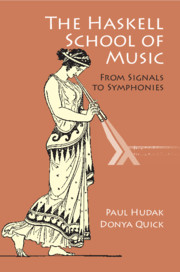
The Haskell School of Music
- From Signals to Symphonies
-
- Published online:
- 21 September 2018
- Print publication:
- 04 October 2018
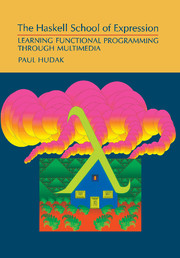
The Haskell School of Expression
- Learning Functional Programming through Multimedia
-
- Published online:
- 28 May 2018
- Print publication:
- 28 February 2000
-
- Textbook
- Export citation
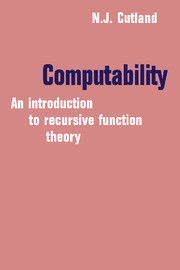
Computability
- An Introduction to Recursive Function Theory
-
- Published online:
- 28 May 2018
- Print publication:
- 19 June 1980
-
- Textbook
- Export citation
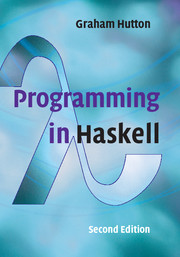
Programming in Haskell
-
- Published online:
- 28 May 2018
- Print publication:
- 01 September 2016
-
- Textbook
- Export citation
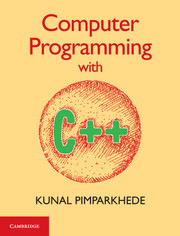
Computer Programming with C++
-
- Published online:
- 28 May 2018
- Print publication:
- 18 October 2016
-
- Textbook
- Export citation
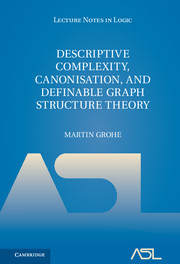
Descriptive Complexity, Canonisation, and Definable Graph Structure Theory
-
- Published online:
- 30 August 2017
- Print publication:
- 17 August 2017
Chapter 7 - Ordered treelike decompositions
- from Part 1 - The basic theory
-
- Book:
- Descriptive Complexity, Canonisation, and Definable Graph Structure Theory
- Published online:
- 30 August 2017
- Print publication:
- 17 August 2017, pp 155-175
-
- Chapter
- Export citation
Chapter 9 - Graphs embeddable in a surface
- from Part 1 - The basic theory
-
- Book:
- Descriptive Complexity, Canonisation, and Definable Graph Structure Theory
- Published online:
- 30 August 2017
- Print publication:
- 17 August 2017, pp 189-230
-
- Chapter
- Export citation
Chapter 13 - Almost planar graphs
- from Part 2 - Definable decompositions of graphs with excluded minors
-
- Book:
- Descriptive Complexity, Canonisation, and Definable Graph Structure Theory
- Published online:
- 30 August 2017
- Print publication:
- 17 August 2017, pp 301-360
-
- Chapter
- Export citation
Part 2 - Definable decompositions of graphs with excluded minors
-
- Book:
- Descriptive Complexity, Canonisation, and Definable Graph Structure Theory
- Published online:
- 30 August 2017
- Print publication:
- 17 August 2017, pp 231-231
-
- Chapter
- Export citation
Chapter 4 - Treelike decompositions
- from Part 1 - The basic theory
-
- Book:
- Descriptive Complexity, Canonisation, and Definable Graph Structure Theory
- Published online:
- 30 August 2017
- Print publication:
- 17 August 2017, pp 94-122
-
- Chapter
- Export citation
Index
-
- Book:
- Descriptive Complexity, Canonisation, and Definable Graph Structure Theory
- Published online:
- 30 August 2017
- Print publication:
- 17 August 2017, pp 535-543
-
- Chapter
- Export citation
Contents
-
- Book:
- Descriptive Complexity, Canonisation, and Definable Graph Structure Theory
- Published online:
- 30 August 2017
- Print publication:
- 17 August 2017, pp v-viii
-
- Chapter
- Export citation
Appendix A - Robertson and Seymour's version of the Local Structure Theorem
-
- Book:
- Descriptive Complexity, Canonisation, and Definable Graph Structure Theory
- Published online:
- 30 August 2017
- Print publication:
- 17 August 2017, pp 518-522
-
- Chapter
- Export citation
Chapter 5 - Definable decompositions
- from Part 1 - The basic theory
-
- Book:
- Descriptive Complexity, Canonisation, and Definable Graph Structure Theory
- Published online:
- 30 August 2017
- Print publication:
- 17 August 2017, pp 123-147
-
- Chapter
- Export citation
Chapter 8 - 3-connected components
- from Part 1 - The basic theory
-
- Book:
- Descriptive Complexity, Canonisation, and Definable Graph Structure Theory
- Published online:
- 30 August 2017
- Print publication:
- 17 August 2017, pp 176-188
-
- Chapter
- Export citation
Chapter 16 - Decompositions of almost-embeddable graphs
- from Part 2 - Definable decompositions of graphs with excluded minors
-
- Book:
- Descriptive Complexity, Canonisation, and Definable Graph Structure Theory
- Published online:
- 30 August 2017
- Print publication:
- 17 August 2017, pp 438-486
-
- Chapter
- Export citation
Chapter 10 - Quasi-4-connected components
- from Part 2 - Definable decompositions of graphs with excluded minors
-
- Book:
- Descriptive Complexity, Canonisation, and Definable Graph Structure Theory
- Published online:
- 30 August 2017
- Print publication:
- 17 August 2017, pp 232-271
-
- Chapter
- Export citation
Chapter 3 - Descriptive complexity
- from Part 1 - The basic theory
-
- Book:
- Descriptive Complexity, Canonisation, and Definable Graph Structure Theory
- Published online:
- 30 August 2017
- Print publication:
- 17 August 2017, pp 40-93
-
- Chapter
- Export citation
Chapter 15 - Almost-embeddable graphs
- from Part 2 - Definable decompositions of graphs with excluded minors
-
- Book:
- Descriptive Complexity, Canonisation, and Definable Graph Structure Theory
- Published online:
- 30 August 2017
- Print publication:
- 17 August 2017, pp 393-437
-
- Chapter
- Export citation
